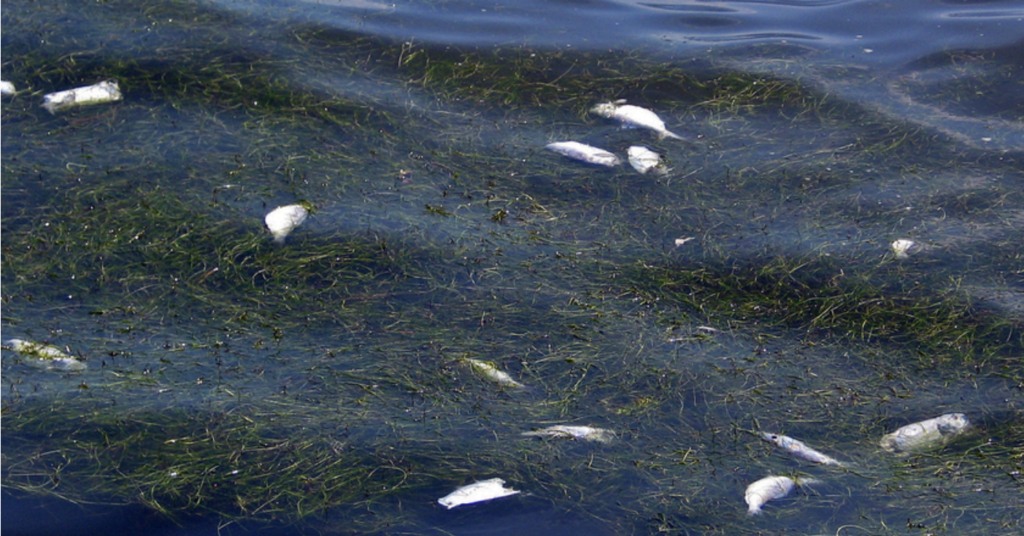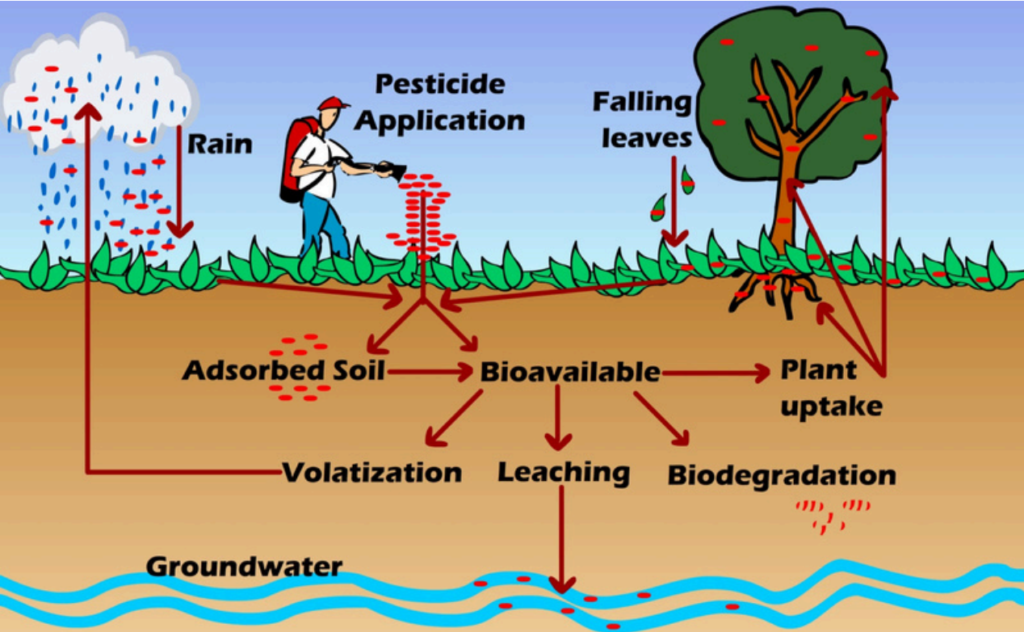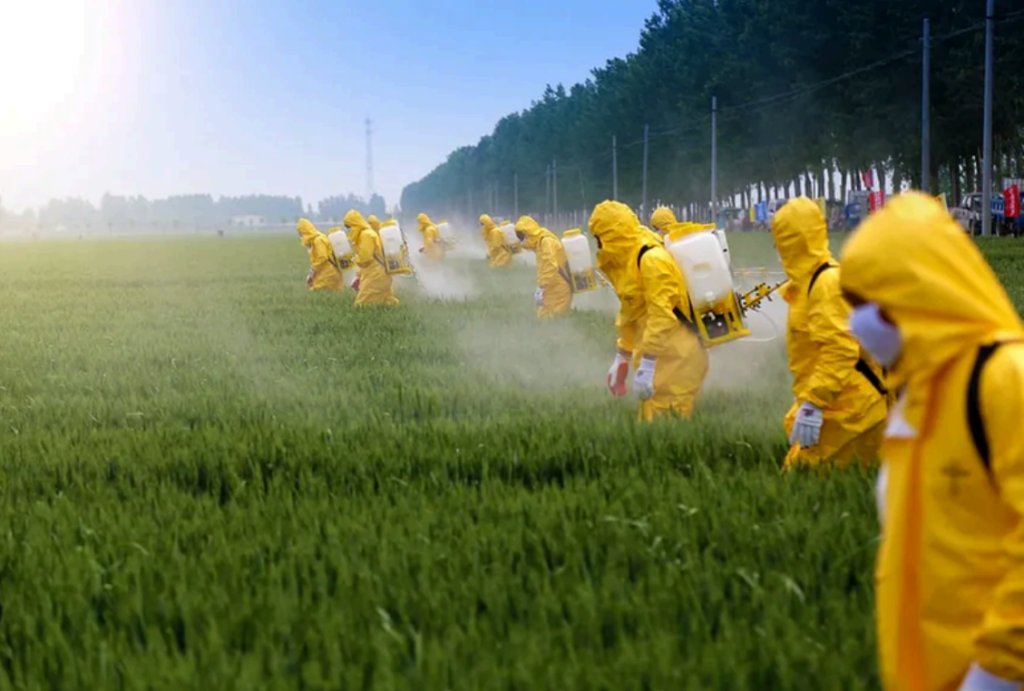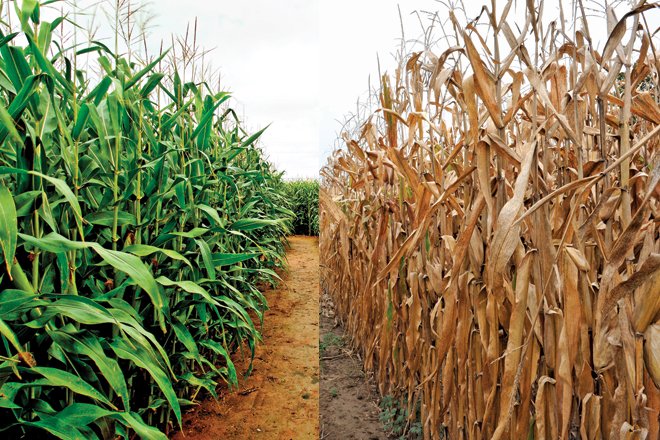Introduction
With the population growth in recent centuries, the need to increase food resources has become more significant than ever. To this end, modern humans have devised methods to enhance agricultural and food production. Despite increasing outputs, these methods have also inflicted damages on society and the environment. One such harm is the issue of groundwater pollution caused by agricultural pesticides. In this article, we begin by examining the negative effects of these chemicals on human health and the environment. Next, we will study the path these pesticides take to contaminate groundwater. In the final section, we introduce innovative and new solutions to fundamentally solve this problem. The goal of this article is to raise awareness and introduce measures that ensure the safety of water resources endangered by agricultural activities.
The impacts on Human Health and The Environment
Human Health
The infiltration of agricultural chemicals into groundwater carries significant risks with both immediate and long-term consequences. When groundwater becomes contaminated with pesticides and other toxins and is then used for drinking or irrigation, it creates a direct pathway for hazardous substances to enter the human body.
Diseases and health effects: Short-term consumption of water contaminated with pesticides can lead to health issues such as skin problems, eye irritation, nausea, and dizziness. In more severe cases, it can cause respiratory problems and acute poisoning. Being in areas contaminated with toxins carries greater risks. Pesticides such as atrazine, glyphosate, and organophosphates are associated with more serious diseases, including:
- Cancer: Several studies indicate a link between exposure to pesticides and various types of cancer, including leukemia, lymphoma, kidney, and prostate cancer.
- Neurological effects: According to recent studies on the impact of pesticides on public health by the Environmental Journal in the United States, long-term exposure to toxins can affect the nervous system and lead to conditions such as Parkinson’s disease, Alzheimer’s disease and others. Diseases of the nervous system.
The chart below shows the diseases that farmers have contracted due to exposure to pesticides and water contaminated with pesticides:

Environmental Impacts
The harmful effects of agricultural chemicals on the environment are very extensive and impact the ecosystem and wildlife in various ways, such as:
- Aquatic ecosystems: The infiltration of chemicals into water can lead to eutrophication, where an increase in nutrient levels causes excessive algae growth. This process reduces oxygen in the water and leads to the creation of “dead zones” where aquatic life cannot survive.

- Soil Health: Pesticides can reduce soil quality by killing beneficial microorganisms that help with nutrient cycling and plant growth. This not only diminishes soil fertility but also increases vulnerability to erosion.
- Damage to biodiversity: One of the world’s valuable treasures is its environmental diversity, which is often comprised by pesticides that fail to differentiate between pests and other wildlife. This causes other wildlife organisms harm; important insects such as bees and butterflies are among the most crucial and particularly vulnerable organisms. This vulnerability can significantly affect plant production and agricultural productivity.

- Genetic changes in wildlife: Exposure to specific chemicals can cause genetic mutations in organisms, potentially leading to long-term changes in population dynamics and species behavior. Research at the University of Chicago has shown that exposure to lethal doses of neonicotinoids (1) (substances found in pesticides) can cause changes in gene expression in honeybees, affecting their behavior, immunity, and reproduction. A notable study demonstrated that these pesticides impact the foraging behavior of bees by disrupting their ability to navigate and return to their hives, which can lead to colony collapse.

One of the methods for measuring the impact of agricultural chemicals on waters is by measuring the level of nitrates in the groundwater of the region. As mentioned in a 2022 article titled “Global Detection of Nitrate Pollution in Groundwater and Review of Removal Technologies” a report for the World Health Organization, “The main sources of nitrate pollution are nitrogen-rich fertilizers used for agricultural purposes.” The impact of agricultural chemicals can be illustrated in a chart below taken from “The Global Assessment of Nitrate“, which shows how many countries have regions with high concentrations of nitrates in their waters.

How pesticides and chemical toxins reach groundwater: a step-by-step process
The infiltration of chemical pesticides and insecticides from agricultural fields into groundwater is a complex process influenced by various factors such as the type of chemicals, soil composition, climate, and farming methods. Understanding how this process works is crucial for reducing the impact of these chemicals on human health and the environment. In the following sections, we will explain this process step by step:
1. Use of poisons and pesticides
Pesticides are used to protect plants from pests and diseases. Depending on the method of application (spraying, injecting into the soil, or seed treatment), a significant amount can remain on plant surfaces or enter the soil directly.
2. Runoff and Leaching
Runoff: During rainfall or irrigation, water flowing over the soil surface can carry surface-applied pesticides away from their application site. This water can enter surface waters or infiltrate the soil, carrying the pesticides with it.
Leaching: Pesticides can seep through soil layers, a process known as leaching. The extent to which pesticides penetrate depends on the type of pesticides, the permeability of the soil, and the amount of water present.
3. Soil absorption and degradation
- Some chemicals, depending on the soil composition and the chemical nature of the pesticides, are absorbed by soil particles. Clay soils and those with high organic matter tend to absorb more pesticides, reducing their mobility.
- Pesticides can also decompose in the soil, a process influenced by microbial activity, temperature, humidity, and the chemical structure of the pesticides.
4. Movement through soil types
As water penetrates deeper into the soil, it can carry pesticides with it. This movement towards groundwater largely depends on the depth of the water table, the type of soil, and the volume of water moving across the surface.
5. Groundwater Contamination
When pesticides reach the water table, they can disperse into groundwater, which may be sources of drinking water. The persistence of these chemicals in groundwater depends on their chemical stability and the conditions of the aquifers.
The process is summarized and illustrated in the images below

Solutions for groundwater contamination by agricultural chemicals
Integrated Pest Management (IPM)
Integrated Pest Management (IPM) is a comprehensive approach to pest control that emphasizes the use of multiple strategies to manage pest populations in an environmentally sensitive manner. The goal is to minimize the use of chemical pesticides by combining biological control agents (such as predators and parasites), mechanical methods (such as traps and barriers), agricultural techniques (crop rotation and resistant varieties), and chemical controls only when necessary. The aim is to maintain pest populations at levels below those causing economically significant damage, while reducing risks to human health and the environment.
The chart below shows the improved productivity of crops using the IPM method:

Use of Biopesticides
Biopesticides are derived from natural materials such as animals, plants, bacteria, and specific minerals. They target specific pests and reduce unintended damage to non-target species and the environment. Biopesticides often decompose faster than synthetic pesticides, leading to less environmental accumulation. Encouraging the development and adoption of these alternatives can significantly reduce reliance on chemical pesticides that contribute to groundwater pollution.
For instance, one can refer to Bacillus thuringiensis, a bacterium that produces proteins harmful to specific insects but harmless to humans and most non-target species. Bacillus thuringiensis produces crystalline proteins (Cry proteins)(2) during sporulation (3), which are toxic to many insects when ingested. These bacteria are sprayed on crops and ingested by pest insects such as worms and beetles. When Cry proteins enter the insect’s gut, they are activated by the alkaline pH, bind to specific receptors on the gut lining, and create pores that cause cell lysis and death.
This biological pesticide is particularly effective against Lepidopteran pests (moths and butterflies) and is used in managing the European corn borer, a significant pest of corn worldwide. The use of Bacillus thuringiensis allows for reduced application of chemical pesticides, thereby decreasing environmental pollution and promoting safer agricultural practices.

Organic Farming
Organic farming is an agricultural system aimed at producing fresh, healthy food while preserving natural life cycle systems. It primarily avoids the use of synthetic chemicals such as pesticides and fertilizers and relies on a wide range of techniques to maintain ecosystems and reduce pollution.
In this section, key aspects of organic farming are discussed:
Use of Organic Pesticides: Organic farms utilize natural pesticides derived from plants or bacteria that have fewer toxins and degrade more quickly in the environment compared to synthetic chemicals. Neem oil contains several compounds with insecticidal and medicinal properties, with azadirachtin (4) being the most active. This substance disrupts the life cycle of insects at various stages – egg, larva, and adult – by inhibiting feeding and disrupting the hormone systems that regulate growth and development. This prevents the maturation and reproduction of pests and effectively reduces their population without the use of synthetic chemicals.
Crop Diversity: This practice involves alternating the species of crops grown on a specific piece of land. It helps break the pest cycles, improve soil health, reduce soil erosion, and thereby minimize the need for chemical interventions. A classic example of effective crop diversity includes rotating between legumes, cereals, and root crops. Legumes, such as chickpeas and beans, have the ability to fix nitrogen in the soil, enriching it for subsequent crops. Following legumes with nitrogen-demanding cereals, such as wheat or corn, benefits from improved nitrogen levels in the soil. Finally, rotating to root crops, like potatoes or carrots, can help break soil compaction and utilize different soil nutrients.
Use of Cover Crops: Planting cover crops like clover and buckwheat can fix nitrogen in the soil, add organic matter, and prevent the growth of weeds. This reduces the need for synthetic fertilizers and pesticides.
Soil Management: Soil management in organic farming is a vital aspect that focuses on maintaining and enhancing soil health without relying on synthetic fertilizers and chemicals. Organic soil management involves various practices designed to improve soil structure, increase biodiversity, and enhance soil fertility through natural processes.
Biological Pest Control: This involves using living organisms such as predatory insects or nematodes (5)to control pest populations, minimizing the ecological damages of agriculture.

conclusion
To effectively combat groundwater pollution resulting from the use of agricultural chemicals, a comprehensive approach is essential. Integrated Pest Management (IPM), the use of biopesticides, and the adoption of organic farming are key strategies that can significantly reduce reliance on harmful chemicals. These methods not only decrease groundwater contamination but also promote sustainable farming practices.
Anselfarm has always been a leader in the agricultural industry. Our experts provide advice to farmers, landowners, and other stakeholders, and we equip them with the knowledge and tools necessary to implement these environmentally friendly practices at Anselfarm. By strengthening a collaborative approach, we help ensure the sustainability of proper agricultural systems and the well-being of communities worldwide. Our goal is to guarantee a healthier and more sustainable future for everyone.
Glossary
1. Neonicotinoids: A class of systemic insecticides chemically related to nicotine that effectively control pests, but pose significant risks to non-target species such as honeybees and have environmental sustainability concerns.
2. Cry Proteins: Toxins produced by the bacterium Bacillus thuringiensis (Bt) that target specific insect gut receptors, causing cell lysis and death when ingested by sensitive insect larvae.
3. Sporulation: A biological process in which bacteria like Bacillus thuringiensis form spores, which are highly resistant structures used to survive in adverse environmental conditions.
4. Azadirachtin: A bioactive compound derived from the seeds of the neem tree, used as a natural insecticide due to its ability to disrupt the growth and reproduction of pests.
5. Nematodes: Microscopic worm-like organisms that can act as biological control agents in agriculture by parasitizing and killing pests, or be harmful by attacking plant roots and reducing crop yield.



Comment
Fantastic Information!